These broad-ranging interviews focus on the role of Raymond James leaders in the industry, the growth of the company as a whole and the expansion of the Central Florida complex.
Click on the boxes below to read the interviews.
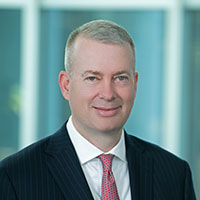
How will the financial industry change in coming years due to the impacts of the pandemic?
While we can never overlook the human tragedy the pandemic has caused, there are silver linings in terms of how our profession has adapted and evolved. For example, many of our advisors have told me they’ve had more client contact and engagement over the past 12 months than ever before. Although we have been challenged to safely meet in person with clients, particularly in the early stages of the pandemic, advisors prioritized service continuity by quickly embracing the wide-ranging remote work tools our firm provides, from Zoom and Advisor Mobile to eSignature and Vault. Going forward, I believe many of the good habits we formed this past year are here to stay. And while we’re all eager to have more in-person meetings with clients, we’ll continue leveraging our new technology practices to maintain an elevated frequency of client communication.
What are best practices for new advisors seeking to grow in the industry, especially during this remote environment?
I believe there will be a persistent need for human advice and a persistent value placed on said advice. Now more than ever, clients and prospective clients need our advice. Knowing everyone reacts to a crisis differently, advisors who have stepped up their client engagement and visibility are being rewarded with deepened relationships, net new assets and referrals.
This past year has offered a lot of time for reflection and has encouraged some advisors to reevaluate their professional lives as well as what they want to get out of their careers. What would you say to an advisor who is considering making a move?
One of the most common refrains from advisors who have joined the Raymond James family is, “I wish I’d done this sooner.” The opportunity to eliminate the headwinds advisors often face at other firms – from lack of book ownership to limited marketing opportunities – is a win in and of itself for advisors and their clients. Furthermore, partnering with a firm that’s large enough to offer industry-leading capabilities, yet focused enough to prioritize the individual success of each associate, offers advisors a compelling opportunity to take their careers to the next level at Raymond James.
What do you think sets Raymond James and our traditional affiliation option apart from other firms in the industry? How will we continue to set ourselves apart over the next decade?
The financial services industry has become like a barbell with four main wirehouses at one end of the spectrum. Admittedly, these firms have scale and strong resources, but their cultures scarcely resemble the firms most advisors grew up with. At the other end of the spectrum are startups, boutiques and regionals. While these firms have cultivated largely positive cultures, they lack the scale to provide the range of strategies, technology and intellectual capital that advisors need to properly serve clients and grow their businesses, especially if they were previously in a wirehouse. Raymond James is in the distinct position of being both large enough to offer a complete range of resources and focused enough to foster a boutique-style culture.
In addition, I believe our firm’s most significant competitive advantage might be AdvisorChoice, which gives advisors the freedom to select the affiliation option that best fits their current needs as well as the ability to change their affiliation in the future. Our book ownership policy is another gamechanger because it gives advisors full ownership over their client relationships.
Our ongoing commitment to championing advisors’ freedom through AdvisorChoice – which we established back in 2004 – and book ownership means that if a recruit likes what they learn about Raymond James during their due diligence process, they can have a certain degree of confidence knowing our competitive advantages will last for many years to come.
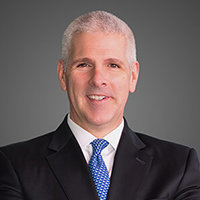
How does the Investment Strategy team support advisors and their clients?
The Investment Strategy team supports the dialogue advisors have with clients, and the most effective way to do that is to make sure our communications are consistent, disciplined and memorable. The way we deliver it has to be special. As chief investment officer, it’s my job to make sure any call I make regarding the markets is not only understandable, but can be implemented by the client. As volatility picks up, our job is going to become that much more important. When the markets become a bit volatile, you’re looking for people who can provide guidance. And that’s what we want to be there for – to have a consistent, concise, actionable strategy available for advisors and their clients.
What led you to a career in financial services?
It was always understood I would go into financial services. My dad was a broker at Morgan Stanley for 40 years. When I was a little kid, he would leave me research reports that I would read and decide whether to invest in the companies. One of my very first stock picks helped make the down payment for my first house.
My dad was the biggest producer in the branch and his brother was the second-biggest. My uncle didn’t have any children, so he always wanted me to come in and take over his and my dad’s businesses. And it would have been a pretty big business. But the timing never felt right. I had my MBA, CFA®, CIMA®, CFP®, but I was already building a career in research and communication, and my dad said I should probably just continue on my path. I’m not an advisor. That’s always been the big shocker.
How did you get started in the industry?
My first job was as a fund accountant for an international stock fund. It was well over $1 billion, and I had to stay there if I couldn’t find one penny. I used to joke that I’d give them a buck if they’d just let me go home. I was getting my MBA at the same time, and one of my professors became a consultant to create asset-allocation programs at Alex. Brown. He asked me if I wanted to work at Alex. Brown, and I couldn’t sign any quicker.
I was with Alex. Brown when it was bought by Bankers Trust and then with Bankers Trust when it was bought by Deutsche Bank. It was around 2000 when they said, “Deutsche Bank’s a big firm, and asset allocation is great, but you have to have some opinions.” They wanted me to be the chief investment strategist.
I took the job and talked to my dad and some other people, and they said a good strategist has a run rate of maybe four, five years and then you’re done. I built it from the ground up and it lasted for 19 years, until I got the opportunity to join Raymond James.
How does your previous experience serve you in your current role?
I have a global perspective and I come from the assetallocation world. I think that right-sizes you to how you should message things. Many chief investment officers come to the role after running an equity portfolio. I’m unbiased. I’m not trying to sell a certain product. I’m just looking at the numbers, the facts, the figures, where we are in the economy. I don’t have any conflicts. I’m looking to create the message that ties everything together in a consistent fashion and offer the best guidance for how a portfolio should be positioned.
You teach an international finance class for graduate students at Loyola University. What do you teach them that’s not in the textbook?
Textbooks aren’t always very good. My textbook is copyrighted in 2017, but still talks about the euro being the next dominant currency in the world. I bring things to life. I bring my students up-to-date things, so when they go into the real world, they have the most recent views and trends that are taking place in the marketplace today. And I’m big on communicating. They do flash talks and a group presentation. People can’t see what’s in your mind. They can only see what you actually communicate.
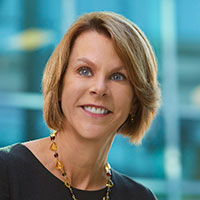
You joined Raymond James in 2017 after 30 years in the financial services industry. What made Raymond James the right place for you at this time in your career?
I reached a point where I wanted to find a way to be able to leverage all the things I had learned over the years – the skills I had developed, the relationships I had developed, the ideas that I had developed – and make a bigger contribution. So, coming to Raymond James was a quest for two things. One was finding a place where my values were aligned. And two was the opportunity to make a contribution, to help us move the business forward. I found both of those things here. I didn’t have any intention of leaving the Midwest, but when I met the leadership team here at Raymond James and the people I would be interacting with, I said, “I want to work here.” I told my husband, “If Raymond James was based in Antarctica, I’d probably be proposing we move to Antarctica.” I thought I would stay in the Midwest, but I wanted to work for this company. And every single day, that decision has been reinforced. I get to do not only the things I’m good at, but the things that help our people and our firm, and give me energy.
You mentioned needing to find a place that aligned with your values. How has Raymond James been a good fit for you?
I start with five core principles with any team I lead:
No. 1 is integrity trumps everything.
No. 2 is clients are our lifeblood.
No. 3 is respect is not optional.
No. 4 is we honor each other with high expectations.
No. 5 is show up to win.
Every time Paul Reilly, our CEO, gets up on a stage he says our business is people. And it shows up in the people that we attract, the people who work here over the course of their careers. It shows up in our retention rate, the fact we have the highest retention in the industry with financial advisors and associates. We are purposeful about attracting, retaining and developing people from a variety of backgrounds because we actually believe it will make our business better.
CEO Paul Reilly defines the vision of Raymond James as being the “premier alternative to Wall Street.” As COO of RJA PCG you have a primary responsibility to help execute on this vision. How do you deliver on that?
AdvisorChoice is what drives our decision-making every day. It’s what makes us unique and has fed our growth. And it’s good for clients. If you’re a really good financial advisor, whether you’re at a wirehouse, a bank-owned financial firm or an RIA in a small town, there’s a home for you here at Raymond James, provided the values and principles align and the client-first mentality is there. And there is tremendous flexibility as you arere not locked into your choice.
I was talking with a prospective advisor who wasn’t sure which affiliation option was the best fit, and I said, “Look, you can come in and we’ll give you our full support as a traditional financial advisor, and in five years if you decide you want a little more independence, we can do that. And if you decide you want a lot more independence, we can do that.” And where else can that happen? There is no place where that choice exists.
For people who want to feel liberated and supported and appreciated for their uniqueness in their approach with clients and their business, they can find the right home at Raymond James. At some firms, if the advisors all look alike, the firm wins. If everybody sells certain products, they believe the “bank” wins and the shareholder wins. That’s the game. Here, we don’t have a game. We don’t have an agenda about what the advisor delivers to the client. The agenda is that we support advisors in delivering for their clients.
And the other thing people on the outside have a hard time believing is book ownership. When you are at Raymond James, your clients are your clients. They choose to do business with you. We are here to serve you, so that you can serve them. That doesn’t exist anywhere else.
Technology is making transformative changes to the way we live and work, and the financial services industry is no exception. What opportunities do you see here?
Our mobile technology is head and shoulders above anybody else in terms of interacting with clients and what you can do on your mobile device. The same goes for our desktop tools. We have a huge opportunity to help our advisors incorporate them into their day-to-day business and make sure they are adding more value for their clients. Once they do, they will be more efficient – and, frankly, it will be more fun – and add greater value for their clients. And in the end they’ll be more productive. When an advisor can spend less time on process and more time with clients, they’re spending their time where they get their energy.
How are the technology tools at Raymond James developed?
At Raymond James, the advisor is involved from the beginning to the end, versus, ‘Okay we cooked this up, you better eat it now.’ I can’t think of anything we do where we don’t have an advisory council – wealth solutions, marketing, technology – because everything we do is informed by the advisor and the client. When we launch a new tool or product, it’s been well-vetted by our advisors.
At the beginning of our conversation, you mention that you are able to do the things that give you energy. What are those things?
I love meeting with clients during their By Invitation Only (BIO) visits. I love hearing clients tell their stories and about how their advisors have impacted their lives. I love meeting with recruits and our financial advisors; I get energy and ideas from them when they talk about what they need and what they do. And I get invigorated by meeting with the support people in the field and our home office teams, because that’s where I started in the business and I know firsthand how these teams impact our growth and how we do our day-to-day business.
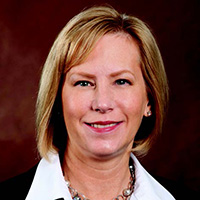
WHY IS THE MARKETING OFFERING AT RAYMOND JAMES AN INDUSTRY STANDOUT?
Raymond James Marketing delivers a unique branding solution no wirehouse or independent broker/dealer offers. We provide brand flexibility – the ability to create a unique brand rather than being limited to using only the Raymond James name – combined with the deep resources of an internal marketing agency. We understand the nuances of the business, which translates to a deeper understanding of how to differentiate a particular advisor or practice and create a compelling brand.
HOW DOES THAT DIFFER FROM WHAT’S AVAILABLE AT EXTERNAL ADVERTISING AND MARKETING AGENCIES?
In addition to our team’s extraordinary creative talent, there are three key differentiators: Advisors and internal departments are our only clients. Our team complements their design, writing, multimedia and strategic skills with a solid knowledge of the financial services industry and the specific needs of financial advisors. Many of our associates are Series 7-licensed. Advertising Compliance is part of the agency and included in project discussions right from the start. When we present a concept, you can be confident Compliance has already given us the green light. Finally, since we are not a profit center for Raymond James, our pricing is typically lower than a traditional ad agency or external marketing professional.
WHY IS IT IMPORTANT FOR ADVISORS TO HAVE – AND BUILD – A BRAND?
Building and maintaining a strong brand is a great way to distinguish a practice and share a compelling value proposition, which can reduce price sensitivity and increase loyalty over time – similar to the way a consumer is willing to pay a premium for BAND-AID® bandages over a generic brand. When truly aligned with the practice, a brand helps establish expectations, convey an advisor’s unique expertise, and demonstrate their values and personality. A consistent – and consistently integrated – brand also increases the likelihood that current clients and centers of influence will refer potential clients who fit the practice’s “ideal client” description.
WHY HAS A BRAND’S ONLINE PRESENCE IN PARTICULAR BECOME SO IMPORTANT?
Over 90% of potential clients who are referred to an advisor Google that advisor to begin their research. A consistent online brand (a website plus social media properties) can add value by allowing an advisor to own the results of that search, and it will position him or her well against other financial advisors a prospective client may be considering.
WHY, AT MINIMUM, SHOULD AN ADVISOR HAVE A WEBSITE?
Today, nearly all businesses have a website or some type of web presence. This includes professional services providers like wealth managers, attorneys, CPAs, etc. Without a website, the authenticity or the stability of the business might be questioned – are you really who you say you are? A website has become table stakes rather than an option.
WHAT ROLE DOES SOCIAL MEDIA PLAY?
Social media can help advisors develop stronger personal connections to clients. They can use insights gained from clients’ posts about family or personal events to drive personal interactions. And they can humanize their practices and demonstrate subject matter expertise by sharing informal and lifestyle-oriented content on Facebook, thought leadership on Twitter, and longer form content on LinkedIn.
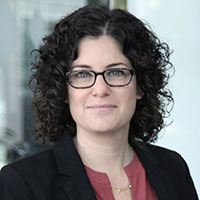
Salit Nagy-Todd will tell you that we’re creatures of habit. Technology is an ever-changing game. To keep up, we must adapt and change as well.
“The one thing that experience has taught me is that you can pretty much do anything if you set your mind to it,” said Salit, senior vice president of technology and chief data officer at Raymond James.
“I am constantly learning new things and looking for ways to be the best I can be. When learning new things, I first try to figure out how to do it on my own, and then go to the experts who know it better than I do to excel. I took the same approach when I learned English.”
Salit’s success is, in part, a product of a family of three encouraging siblings and a strong mother.
“Coming from Israel, living in the region we did, in order to survive, you had to be tough, willing to work hard to reach the top, and rely on your team, which in my case was my family. We grew up in a culture that was competitive all the time, in a positive, team-oriented kind of way,” she recalled. The same values apply to what she calls the business within technology. “You help each other out while challenging one another to exceed expectations.”
When it comes to creating technology for advisors, with advisors, “mediocrity is not an option,” she said. “We’re representing their voices to all the technicians behind the scenes to ensure we are developing industry-leading technology that serves advisor needs.”
But her team doesn’t do it alone. They can’t. They succeed by working collaboratively with advisors to support the advisor-client relationship.
A MONTH IN THE LIFE
“Typical with any career,” Salit said, “you end up with the one you love.”
After 14 years learning the industry ropes in various roles with Raymond James operations, her path led her to technology, where she managed the top-requested technology initiative for advisors, Client Reporting.
“It required a different mindset to succeed,” Salit said of the career move. “It’s very, very, very creative and sophisticated on the technology side.”
Salit needed to get creative herself. She told Executive Vice President of Technology & Operations Bella Allaire and Chief Information Officer Vin Campagnoli that she needed to touch and feel what advisors do every day.
“We have to understand literally everything the advisor does,” Salit said.
So she spent a month and a half on the road shadowing a variety of advisors. “I’d visit the branch, and they’d spend hours with me, walking me through everything they did and how they did it and why they did it,” she said. “I took all of that back, and I said, ‘Okay, this is what we’re going to develop from a technology perspective.’ And it worked very well because we’ve developed an innovative application that the advisors found differential and beneficial.”
INFORMATION ON THE FLY
But Client Reporting is only a sliver of the big picture. Client Center, Client Relationship Manager (CRM), Goal Planning & Monitoring (GPM), Portfolio Management, Practice Center, Account Aggregation, Advisor Mobile, Reports Portal, Vault. The list goes on, but those are just some of the technology tools available to help advisors gain a holistic view of their clients’ plans and assets to better serve them while growing their businesses.
Account Aggregation was brought in about a year and a half ago and has provided a significant number of opportunities within the branch to find more assets and bring them in. And that information is tied into Investor Access as well as GPM. Practice Center and Reports Portal give advisors the ability to sort and segment their clients in an effort to figure out different ways to streamline their businesses. And Client Center is used by many advisors to get their days started and continuously check in.
And through Client Reporting, “There’s so much customization in that system that if somebody wants to see a different view, it’s easy to do,” Salit said. “Right in front of the client, they can make a few modifications and pull it right back up, and then review the output together. That’s been a huge differentiator.”
Advisor Mobile, though, is upping the game.
“We have gotten a significant amount of positive feedback on our Advisor Mobile application. An advisor can be away from the office or at a client lunch meeting, and when asked an account-related question, the advisor can pull up Advisor Mobile and easily get that information on the fly,” Salit said. “It’s become one of the top applications that advisors use on a regular basis.”
That’s because every application is developed from the mindset of the advisor.
“While it’s very important for us to hit our target dates and not miss our deliverables, that doesn’t mean we’re going to roll something out that doesn’t meet our advisors’ needs,” Salit said. “We’ll never do that, and that’s what sets our technology and our approach apart.”
When an application goes to pilot with a rotating group of advisors from all Raymond James divisions who sit on the Technology Advisory Council, if they think it’s not intuitive, it doesn’t flow right, it doesn’t work right, Salit’s team will go back to the drawing board and work until it hits the mark. That’s the whole point of the council.
“They help us prioritize spending and what our top priorities should be,” Salit said.
But it doesn’t stop there.
“We meet with them every couple of weeks, so they literally are with us through the design and development cycle,” Salit said. “We’ll talk about everything from what we are trying to solve through this technology to whether they would use a certain button in a certain place. We work with them starting with conceptual whiteboards that we might share with them monthly, all the way through to the end where they are testing the system with us through pilot.”
WHAT’S NEXT
Salit’s enthusiasm radiates as she talks about the future.
Right now, her team is in the process of rolling out a new client onboarding application that will help streamline the data capture and maintenance process. Information will only have to be entered once, and it will pass through the entire client-advisor relationship.
“It’s a much more efficient and seamless experience for clients and advisors,” Salit said. “The whole experience is driven around providing choices for both the advisor and the client. It’s the white-glove approach that focuses on our clients. It’s a multi-year program that will see more functionality over time.”
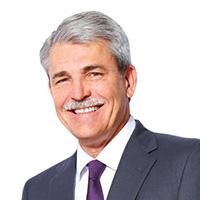
Q. You’ve done a great job defining the vision of Raymond James as being “the premier alternative to Wall Street.” As CEO, you have a primary responsibility to help execute on this vision. How do you deliver?
A. This is definitely a team effort by everyone at our firm – it’s the idea of having all the capabilities of our largest competitors, within a client-first culture.
In terms of capabilities, we have to focus on continuous growth, because growth is a virtuous cycle that allows us to continuously reinvest in the technology, people and processes that help us respond to a constantly changing environment.
That said, our growth has to be grounded in the client-first culture that has defined us and is the basis for our success. We believe the best way to serve end clients well is to serve their advisors well, treating them as our clients. It’s an approach that results in high advisor and client satisfaction, and is something we’re extremely proud of.
It’s no coincidence that I typically start and end every presentation I give by talking about our values of client first, independence, integrity and conservatism. We all need regular reminders to ensure we don’t get off course, even as we continue to evolve the business.
Q. Looking across the competitive industry landscape, what do you think is going to set Raymond James apart in the industry? What do you see as the defining feature in terms of service, culture or expertise?
A. Our focus on supporting the advisor-client relationship is the key to our competitive advantage, whether you’re comparing us to the more traditional firms, or to technology-driven “robo” platforms. We believe the benefit Raymond James offers to investors isn’t about the firm, it’s about the advisor they work with.
When we make decisions at the corporate level, we are hyper-focused on supporting advisors and their clients. Honestly, this often makes the job for our associates more difficult – it would be easier to just make a change and move on, let the chips fall where they may. Instead, there’s a decided thoughtfulness to our approach that I saw when I joined the firm … it’s the Raymond James way. Associates at all levels are trying to think through potential impacts before they happen and consider questions clients and advisors will have before they have them.
Of course, we must respond to changes in our environment – from regulation to technology to client expectations – so we will remain a competitive partner for advisors and their clients, as well as a reasonably profitable investment for our shareholders. But if we focus on doing things thoughtfully and with great consideration for advisors and their clients, we can evolve even as we remain rooted in the culture that has been, and will continue to be, our competitive advantage.
Q. The firm continues to invest in technology, specifically technology for advisors and their clients. How do you think this will help better our firm and our advisors?
A. Well, first of all, there’s an imperative to invest in technology – access to information and the ability to perform tasks online is critical to our daily lives, and protecting electronic data is a huge part of being a corporation in today’s world.
But our technology investments definitely go beyond the “keeping the lights on” baseline, and there’s a lot to be excited about. Our approach is to create tools to empower advisors – to automate tasks that should be automated, to offer insights based on data that will help advisors meet the sophisticated needs of their clients, and to increase the ability for advisors and their clients to collaborate using technology.
The goal is to give advisors more tools, insights and time to connect with clients and understand their unique needs– which is what the best financial advice is based on – as well as more tools to effectively meet those needs. Again, it’s about supporting the advisor-client relationship.
Q. As you look forward toward the next decade, how is Raymond James positioned to manage the constant changes our industry presents?
A. There’s a reason Raymond James was one of the few firms that navigated through the financial crisis, not only surviving, but thriving. It’s our management approach and our long-term view, but also our willingness to adapt and do the work necessary to meet demands, whatever they are.
The year I joined the firm – 2009 – wasn’t the best year in financial services industry history, to say the least. (I have impeccable timing.) But it was the most successful recruiting year in Raymond James’ history. Yes, advisors were fleeing failing firms and we were a haven for them, but I think part of what we saw was our associates really step up. They were working under extreme circumstances – their peers at competitor firms were losing their jobs, there were compensation and hiring freezes at Raymond James so we wouldn’t have to take that next step – but they didn’t back down from the challenge of bringing on all these advisors. They saw the opportunity to introduce a different way of doing business to them, and made it happen.
That ethic is why we’ve successfully integrated firms like Morgan Keegan and Alex. Brown. It’s why we continue to innovate and introduce new technology tools to advisors. It’s an attitude that permeates the firm, and is one of the reasons I have confidence in our ability to not only react to changes, but take advantage of them in a way that helps advisors and their clients be even more successful.
Q. Raymond James has proven to be successful with integrating acquisitions while maintaining the strong cultural values of the firm. How do you plan to continue to feel small as you approach 7,200 advisors and continue to grow?
A. Raymond James has emerged as a well-recognized player in the wealth management industry over the last 10 to 15 years, and that idea of the premier alternative to Wall Street we talked about previously has really resonated with advisors, leading to successful recruiting, as well as high retention of advisors when we combine with other firms, and – even more important – ongoing retention of existing advisors.
That growth is great, but it does bring the challenge of maintaining culture. How can you offer the same level of service to 7,200 advisors and their clients that you did to half that many? How can you ensure the support associates we hire today will have the same commitment to our Service 1st philosophy that those who have been with us 20 years demonstrate?
I’d say it’s a matter of attitude, not size. It’s a discipline of staying focused on our core values and how we manage the business. Of communicating – repeatedly – what is important and then demonstrating – consistently – that it’s not just talk.
I love that I can be in a meeting with people from all over the firm talking about a new product or service or a business change and inevitably someone will ask the question: What does this mean to clients?
That focus on clients really defines Raymond James and is the litmus test for everything we do. Being in those meetings and hearing questions like that tells me we’re doing something right. We’re not perfect, and we make mistakes, but we start from the right place.
We’re focused on growth, yes. But you don’t continue to grow if you make short-term decisions that don’t first consider the people you’re serving … eventually those kinds of choices come back around, usually with not-so-great consequences.
I’m confident that the foundation Bob James created and that Tom built this great company on will continue to be the reason for our ongoing success. It’s worked for more than half a century; I don’t see any reason to change the fundamental principles that got us where we are today.
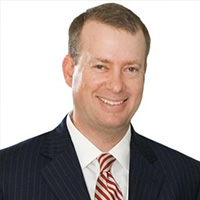
Q. With your climb from cold caller in Atlanta to president of Raymond James & Associates, you have held a few positions in our firm. What have you learned along the way?
A. I’ve learned one never stops learning. I enjoy the challenge of getting outside of my comfort zone to gain new experiences and business and life lessons. A day without new experiences is a missed opportunity. I’ve also learned, as well as witnessed, over my 20 years with Raymond James that we have a tremendous opportunity as financial advisors to make a difference in the lives of our clients. This is a noble profession, and we should be proud of our contributions to our communities and society.
Q. In addition to your other responsibilities, you are proactive when it comes to recruiting and try to meet with every advisor who visits our home office. Why?
A. I’m passionate about our story and demonstrating to advisors that no matter how commoditized products and cultures have become throughout the profession, Raymond James is different. By helping advisors recognize these differences, we arm them with the information they need to understand how our unique strengths can better serve their clients and their business. Plus, many of these advisors ultimately join Raymond James. Spending time with them from day one begins the process of building the lasting relationships that help to perpetuate our culture of accessibility.
Q. Meeting with advisors, I can imagine that you hear best practices they use to power their growth. Are there any common threads you might share?
A. One common thread is execution. The best in our industry have figured out that, while it’s important to optimize marketing and practice management strategies, it’s far more important to simply execute. The best demonstrate over and over again a willingness to get out of their comfort zone and take the steps that create real results and real growth.
Q. How about the other side of that coin? What are you seeing that makes you scratch your head a little bit?
A. The most frustrating thing I witness is when I meet with an advisor or team and hear them agree we have a better culture, stronger support, a great platform and a more competitive compensation plan, yet they just can’t make a change. It is as if their fear of change is so powerful they would rather tolerate a situation that, by their own admission, shows no signs of getting better. Our greatest success stories come from those who are thoughtful enough to weigh their options, decisive enough to make a decision and strong enough to have the courage to say, “I am making a change because it is the right thing to do for my clients, my business and my family.”
Q. Paul Reilly has said numerous times that growth in the Western United States is a priority for us. What do you see as our biggest impediment to success in these markets?
A. While we’ve had success with our independent contractor affiliation option in the West, we still have some work to do in educating advisors about who Raymond James & Associates is. We need advisors to understand that we’re a service firm that is superior by almost any measure to the alternatives today. As we share the employee affiliation option with advisors out West, we’re seeing great interest and improving success, as evidenced by our 10 traditional private client group branches opened in California over the last five years or so. As we accomplish our goal of making Raymond James more well-known, we need to get the message out that Raymond James can’t be placed side by side on a spreadsheet. There is much more to this firm.
Q. How do you mean that?
A. Well, how do you put on a spreadsheet things like qualifying for your own assistant at a production level almost half that of the firms we usually compete against? How do you quantify the impact our lower client fees, significant investment in mobile technology and commitment to continuous advisor training will have on an advisor’s practice?
Q. That’s a tall order.
A. It’s a tall order until they visit us in St. Petersburg, spend some time with people they will interface with every day and see that maybe our distance from New York and freedom from bank influence are meaningful advantages. If an advisor is considering a change, even if the decision is a few years away, I would suggest they owe it to their clients and their practice to experience firsthand why Raymond James is truly the premier alternative to Wall Street. Our firm is big enough to have the tools, technology and resources they need to effectively serve their clients, yet small enough to have successfully preserved the culture many of us grew up with. Investing the time to understand who we are has zero downside and they just might discover, as we have, that Raymond James is an exceptional place to call home. Thank you, Tash. Always a pleasure.
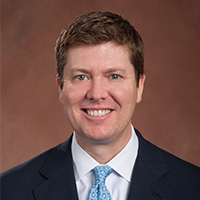
Q. Mike, the Marketing department is one of the most talked about departments after every advisor visit to our home office. What makes your department so unique?
A. We are built like a full-service advertising agency within the firm and staffed with nearly 150 employees dedicated to the philosophy that the advisor is our client. We work with thousands of advisors each year, but recognize that each practice has a unique story. We view these stories as the foundation from which we collaborate with them to develop and articulate their brand.
Q. So you brand not just for the firm but also for the advisor?
A. Yes. We believe that if we can help advisors better manage and build their brand - help them clearly articulate their value proposition and consistently express their values, personality, commitment to the community, etc. - they will get more referrals, have better success with networking, and strengthen relationships with clients and centers of influence. It’s all part of an integrated marketing plan that includes logo designs, various forms of collateral and a digital presence.
Yes. We believe that if we can help advisors better manage and build their brand - help them clearly articulate their value proposition and consistently express their values, personality, commitment to the community, etc. - they will get more referrals, have better success with networking, and strengthen relationships with clients and centers of influence. It’s all part of an integrated marketing plan that includes logo designs, various forms of collateral and a digital presence.
Q. Social properties?
A. I’m talking about a carefully crafted LinkedIn profile that provides a summary of the advisor’s credentials; a team or practice Facebook account to reflect the advisor’s values, commitment to the community and personality; as well as an active Twitter presence to demonstrate subject matter expertise important to the advisor’s clients. All these, tied together with a customized website that spells out a compelling value proposition and is designed to be optimized for search engine results, should help convert more referrals into in-person meetings.
Q. Most advisors don’t have the time or expertise to know how to put all that into some type of coordinated action.
A. You are right; this takes work and a thoughtful marketing plan, and this is where our team can add value. We don’t expect advisors to be creative geniuses or even strong marketers, so we take them through a process to help identify their growth objectives, articulate their brand and pull everything together with the resources of our award-winning in-house agency. Case studies of our work can be found on RaymondJamesMarketing.com, and more information about our broader marketing support within the context of our practice management resources can be found on AdvisorChoice.com.
Q. Our best ideas on a public website?
A. Yes. This is a natural extension of our philosophy of transparency and commitment to service. Both RaymondJamesMarketing.com and AdvisorChoice.com let us demonstrate how we serve our advisors as clients and can partner to help them achieve their objectives for their practice.
Q. OK, last question. Let’s say I’m an advisor a bit late to social media. How should I get started?
A. I think it’s important to treat this like any other marketing or communications activity. Be clear about your communication objectives. Then think about what your practice stands for and how you’d want your clients and centers of influence to speak about your team to potential clients. With that in mind, you should then develop mini-plans for each social platform you intend to use, understanding who you are trying to reach and what your communications will say about your brand and your value proposition. Having an editorial calendar to ensure you cover certain topics on a regular basis can keep you on track (e.g., you might plan to post something related to a local charity your practice supports once a month to reflect your values). Finally, working with a marketing agency that’s familiar with the regulations associated with the financial industry can help ensure you remain compliant, leverage available best practices, and effectively build your brand online and otherwise.
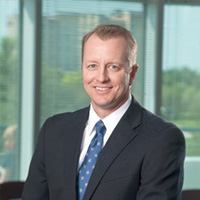
Q. Thanks for taking the time to speak with us. Why don’t we start with a little history of the Trust department.
A. For the past 23 years, Raymond James Trust has focused on providing our advisors’ clients with a dedicated corporate trustee. Today we work with over 3,500 families and have $3.4 billion in assets under administration. With 90 trust associates located in eight offices across the United States administering personal and charitable trusts for individuals and families, we’ve grown by over 15% per year for the last five years.
Q. To what do you attribute this growth?
A. The increase in the number of experienced financial advisors within the firm can’t be overlooked. However, we also spend considerable time introducing the benefits of incorporating a corporate trustee in overall estate planning. There are many non-tax reasons for trust planning, like asset protection and preservation, and this is motivating clients to consider transferring wealth into trusts as opposed to outright transfers to heirs. I think advisors are recognizing this need and are responding appropriately.
Q. I read recently that one of our competitors is exiting the trust business. We obviously are moving in the opposite direction.
A. Trust companies, especially those owned by banks, are experiencing not only increased regulatory requirements since the financial crisis but are also struggling to grow assets with a skeptical distribution network. To build a reputable and viable trust company, to invest in the resources needed to own the technology and attract the talent required to deliver the fiduciary oversight and administration required of a corporate trustee, there must be complete commitment from the top of the organization. I’m proud to say we have that commitment at Raymond James. Our mission is to be a world-class trust company, and it begins with our most valuable asset, the 6,000 advisors across the firm. We work alongside them, serving the client as one team. And unlike most firms, we don’t take over the advisor/client relationship. In fact, our advisors remain fully engaged with the client and involved in the investment process. I think this really is one of our key differentiators.
Q. How so?
A. Two things. The trust business is, at its foundation, a business of trust. By keeping the advisor involved, the grantor has confidence that their beneficiaries will have, to a large degree, a service experience similar to their own. Also, within reason, the advisor maintains control over the investment process. Clients like the idea that the advisor they know and trust will be involved every step of the way. I think you would be hard-pressed to find this approach at other firms.
Q. OK, what are we not so good at?
A. That is a great question. Today we are starting to see more requests from clients seeking a trustee that specializes in special needs trust administration. We should be better at this, and we are recruiting new talent with expertise in this arena. Also, occasionally we get requests to serve as a trustee for Delaware Asset Protection trusts that can provide additional protections from creditors due to their state statutes. This is an area we will need to address as today you must have a physical office in Delaware to be considered a qualified trustee for these types of trusts. Q. Can California advisors be comfortable that Raymond James Trust will commit the resources to support growth in this market? A. Three years ago, we hired an experienced trust consultant, Jon Muir, to serve California and some other western states. His ability to raise awareness of our capabilities and the financial strength of Raymond James, combined with our reputation of service and our competitive fee structure, have resulted in many new opportunities. We’re committed to California and the West and plan to scale up our resources to stay in front of these opportunities. How we grow will depend greatly upon the needs of the advisors and clients.
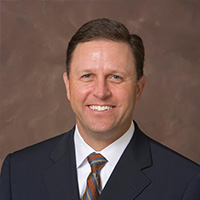
Q. Steve, recently I visited our home office with an advisor who is considering joining our firm. When asked a question about the bank, our chief executive officer, Paul Reilly, said, “We have a bank. It has one branch and two ATMs and we have no plans to double either one.” What did he mean?
A. We will never measure the success of Raymond James Bank by the number of branches or the size of our ATM network. In our world, we simply don’t need to build all that out. Raymond James Bank ranks as the third largest bank in Florida based on asset size. We originated about $500 million in mortgage lending last year and with a growth rate of around 10%, we were among the fastest-growing banks in the country - not bad for a bank with one branch and two ATMs.
Q. To what do you attribute this success?
A. From day one, our bank was created to serve the advisors of Raymond James. Our success has been and will always be directly tied to the success of our financial advisors. During the financial crisis when other institutions were taking TARP money to survive, the financial advisors joining our firm brought significant new assets to the bank. We actually had to stop taking incoming deposits because the board of directors limited deployment of the holding company’s capital. Today, we are growing both as a result of competitive product offerings designed to address the needs of our client base and the integration of the advisors that joined us from the acquisition last year of Morgan Keegan.
Q. Why would the board limit the deployment of holding company capital to the bank?
A. I think it’s their way of never having to worry that the culture of the firm will be overly influenced by the bank. Everyone at the bank understands that Raymond James is first and foremost an investment management firm. In FY13, the company generated roughly 64% of its revenue from investment advisors serving their individual investors. We are a strong contributor to the overall firm’s success. However, we understand that we are but one instrument in a diversified orchestra of revenue contributors.
Q. You mentioned competitive product offerings. Can you elaborate?
A. The securities-based lending offering is an excellent example. I can think of no other firm that prices their loans not just on the value of the securities pledged as collateral but on the value of the entire client relationship, across accounts. While a few account types are excluded, this offers a significant advantage to the client, and our advisors are winning business as a result. Of course, we also offer traditional home mortgage and home equity line products. RJ Bank credit cards and checking are offered to clients through our advisors.
Q. What’s missing? Where could the bank do a better job?
A. There are certainly traditional bank products where we have chosen not to compete. For example, from time to time I will speak to advisors that used commercial lending to build their book. That business isn’t what the overwhelming majority of our advisors are asking for, so we aren’t investing our intellectual and investment capital there. As for doing a better job, bank lending remains paper intensive and sometimes things happen to slow the process. This keeps me up at night, and we continue to invest in people and processes to minimize these events. Failing to satisfy the client in lending can have a very real impact on the client relationship for our advisors. We want no part of that.
Q. The firm is experiencing rapid growth in California. What is the bank doing to support us?
A. When well-informed advisors have access to competitive products their clients need, everyone wins. That is exactly what we want to create in California. We recently hired a California-based banker who we hope can become an extended member of the team for our advisors there. Having knowledgeable, accessible support can help those advisors with an interest and need for banking products serve clients with confidence.
Q. How do you envision the future of banking as it relates to investment advisors?
A. Banking is certainly going to always be a part of the equation. However, I think the advisors’ view of banking and banking products will depend greatly upon where they sit. Banks made a lot of assumptions when they acquired their way into this industry. I believe most miscalculated the difficulty of distributing their products to individual investors. Their distribution mentality clashes with the independent nature of our industry’s successful advisors. Add in their well-publicized quest for higher margins and I think you have a recipe for continued discontent. Many of the advisors I speak with from other firms have seen credit card offers and other bank products directly marketed to their relationships. No advisor approval and, of course, no advisor participation. That’s one way we differ. Raymond James Bank will not step between the advisor and the client. That goes against everything we stand for, and we simply won’t do it.

Technology built for advisors and responsive support to help you use it your way.

We offer ownership of your business. In fact, we’ll put that in writing.

Create and promote your brand with a team of more than 100 in-house marketing experts supporting you.